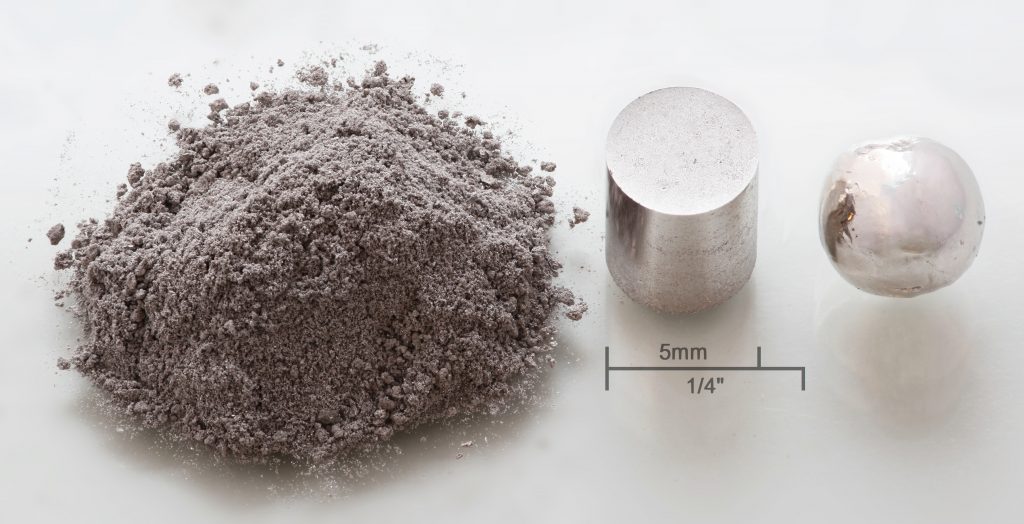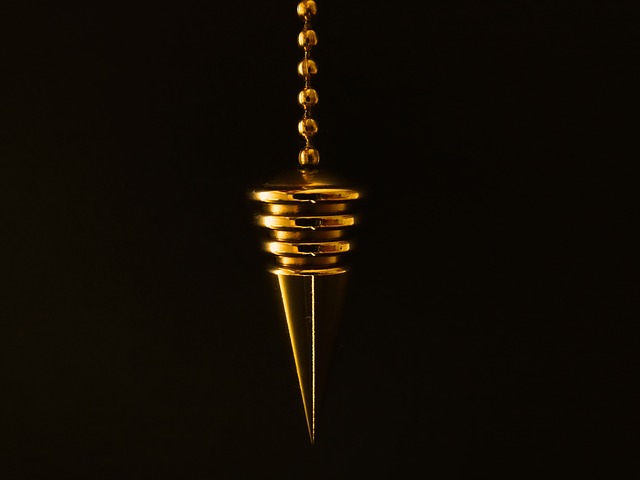The ability to 3D print metal materials is probably one of the more exciting ongoing developments in the world of additive manufacturing. If you’ve been curious about how 3D printing metal works, what materials are available, or how to go about doing it, then you’ve come to the right place!
3D Printing Metal at Home
One of the first things people often want to know is whether or how soon they can create metal objects using their own home printer. With the current state of technology, the answer is both exciting but also maybe disappointing at the same time. Disappointing because, currently, a machine that can print truly metal parts will cost over $100,000. Not exactly within the range of most hobbyists. For now, true metal printing remains in the hands of professionals.
That said, there are now metal-infused filaments for use with FDM printers which can be used by consumer-grade machines. These filaments are charged with metal powders, which makes the parts they produce look remarkably a lot like genuine metal. These metal-infused parts will have some characteristics of the metal they are imbued with, but, of course, their primary material characteristics will come from the PLA or ABS base material that makes up most the filament. These parts are metal-ish, but they aren’t really metal. Depending on your application, that may or may not be okay.
3D Metal Printing Methods
Like other forms of additive manufacturing, 3D printing with metals involves building up a part layer after very thin layer of material. There are a number of different ways this can be achieved, though. As with all forms of 3D printing, the technology and materials appropriate for you will depend upon the nature of your project and what you are trying to achieve.
Powder Bed Fusion

Probably the best-known metal 3D print method, powder bed fusion is a technique in which metal powders are heated with a laser (or some other energy beam), fusing them together to create a solid object. Once the part is printed, it has to be sifted out of the left-over powder. Direct Metal Laser Sintering (DMLS) is the most well-known example of this principle. Electron Beam Melting (EBM) is similar, but actually melts the powders rather than merely fusing them, resulting in fully dense metal parts.
The advantages of powder bed fusion/melting are the wide range of materials available and the ease with which it can be used to create objects with sophisticated geometries. The biggest drawback is that the technique requires the use of support structures, which require specialized knowledge and equipment to properly remove once the printing is complete. While this is labor intensive, the ability to produce fully metal parts definitely makes it worthwhile.
Metal Binder Jetting
Binder jetting is a unique additive technology developed by MIT. Metal binder jetting works very similarly to extrusion printing, except that instead of extruding a melted thermoplastic, thin layers of metal powder are rolled onto the print surface while the print head ejects a glue-like binding agent. These layers of metal powder and binder fuse to form a solid object, which then needs to be placed in a curing oven so that the glue can properly harden.
Once cured, the part needs to be filled with some sort of filler material, otherwise it will still lack strength. Bronze is a common filler. Binder jetting does not require a support structure, which makes it an attractive option for printing metals if you don’t need the high density and strength of fused/melted metals.
Metal Deposition
This technology is almost unbelievable, and it involves extruding actual metals in order to 3D print an object. Metal deposition can be used to create enormous pieces, like full-size bridges. There are two techniques for depositing metal: Directed Energy Deposition (DED), and Electron Beam Additive Manufacturing (EBAM).
DED works by fusing metal powders with a laser as they are extruded to form the layers of the part being built. This requires a sizable robotic arm, and usually requires a sealed chamber. EBAM is like soldering on a larger scale. An electron beam fuses 3mm thick titanium wire, and the molten metal is used to build up large structures.
Metal deposition is an exciting and fascinating technology, but it’s not currently available for regular users. It is extremely costly, and is used primarily for military and other very high-budget applications. Who knows what the future might bring, though, as innovators continue to push the boundaries and lower the costs of 3D printing technologies.
Material Selection: Soft Metals Vs. Hard Metals
Materials selection is just as important as your choice of 3D printing technology. Obviously, not all materials are appropriate for all applications. Even within the domain of metal 3D printing, there is a range of materials available, so you’ll have to do a little bit of research and planning to determine what will be best for you.
In broad terms, metals can be grouped into two main categories: soft metals, which are less rigid, and hard metals, which have greater strength but at less flexible.
Soft Metals
Softer materials have the advantage of greater ductility and malleability, but at the cost of lower strength. Soft metals are regularly used in additive manufacturing, either because of their desirable aesthetic qualities or because the application is more suited to less rigid materials. This category includes aluminum, one of the most popular materials, as well as platinum, silver, and gold, which are used primarily for decorative purposes.
Aluminum: Aluminum, by itself, is quite a soft metal. This makes it highly malleable and ductile, but renders it somewhat useless for mechanical applications. To overcome this, aluminum is often combined with other metals or elements to create alloys with more desirable characteristics. Copper, zinc, magnesium, and silicon are often mixed with aluminum in various ratios to create strong, lightweight materials that are regularly used in a variety of industries from automotive to aircraft to consumer products.
Brass: Brass has been an important metal for manufacturing for thousands of years. An alloy of copper and zinc. It is still used widely both for decorative purposes, and for applications that require low friction, such as locks, bearings, gears, and doorknobs. The low-friction quality is also why brass is used for ammunition casing. It is also very common in plumbing and in electrical work. Brass can be polished to create a highly attractive finish when required.
Bronze: A close relative of brass, bronze is an alloy of copper and tin. Bronze is highly ductile, and much less brittle than other popular metals, like cast iron. A good conductor and corrosion resistant, bronze is used for plumbing and electrical work. The pleasant reddish color of bronze makes it a desirable material for jewelry and other decorative design functions.
Silver: Silver is an incredibly important metal. Silver possesses the highest electrical conductivity, thermal conductivity, and reflectivity of any metal, and has long been valued as a precious metal. Silver is, obviously, very popular for aesthetic and decorative applications, but it is also invaluable for a number of industrial and practical purposes. It is used in electrical devices, solar panels, and water filtration systems. Silver is quite soft and very flexible.
G old: Gold! A definite fan favorite. Very soft, malleable, and ductile, gold is one of the least reactive elements on the periodic table. While gold is primarily used for decoration and currency, about 10% of the gold produced today is used for industrial purposes. The most popular application is in electronics, where it is used to make corrosion-free electronic connectors. For 3D printing, the primary application is for jewelry, sculpture, and other decorative uses. It is also used in restorative dentistry.
old: Gold! A definite fan favorite. Very soft, malleable, and ductile, gold is one of the least reactive elements on the periodic table. While gold is primarily used for decoration and currency, about 10% of the gold produced today is used for industrial purposes. The most popular application is in electronics, where it is used to make corrosion-free electronic connectors. For 3D printing, the primary application is for jewelry, sculpture, and other decorative uses. It is also used in restorative dentistry.
Hard Metals
Hard materials are more difficult to work with, and are generally reserved for those applications where you need a part with a high degree of strength and which can stand up to a great deal of pressure. The following high-performance materials are available for laser sintering and other metal printing methods.
Steel: Stainless steel is an extremely useful material for a wide range of applications, and it also happens to be one of the more affordable metals available for 3D printing. It is used in a wide range of industrial contexts and also for jewelry and other decorative uses. There are a variety of different steel alloys available with different properties. Steel is also available for metal binder jetting, but you are much more limited in the kinds of geometries you can produce using this method compared with DMLS.
Titanium: A bit more pricey than steel, titanium is an extraordinarily versatile and useful material. Extremely strong but also light, titanium is one of the most popular metals in additive manufacturing, both for powder bed fusion and binder jetting. It is used in the medical field for prosthetics, in automotive design, and aerospace. The biggest concern with working with titanium is that, because it is very highly reactive, there is a risk of explosion when the metal is in a powdered form. It therefore needs to be printed in a vacuum, which of course complicates the process somewhat.
Inconel: Inconel is a family of nickel-chromium-based superalloys that are resistant to oxidization and corrosion particularly well suited for extreme temperature and high-pressure environments. Inconel can handle temperatures considerably higher than steel. Inconel is particularly attractive for 3D printing since it is difficult to work and machine using traditional manufacturing methods. Used primarily in the oil and gas, aerospace, and chemical industries.
Cobalt Chrome: As the name suggests, this is an alloy of cobalt and chromium. It has an extremely high specific strength and is commonly used for medical implants and turbines. Cobalt chrome is biocompatible and highly resistant to corrosion, which makes it great for medical applications like hip replacements. It has mechanical properties similar to steel. The downside to cobalt chrome is that it has low ductility and is vulnerable to fracture.
Printing in any of these materials involves a fair amount more expertise than 3D printing plastics and nylon polymers. The post-processing required is understandably quite a bit more intensive. The machines are also quite costly, and outside the reach of hobbyists and most businesses. Unless it’s your intention to run a 3D printing business, your best bet is to hire a professional 3D printing firm specializing in metal.
Cad Crowd’s contract manufacturing services are just what you need. We connect clients with top-quality U.S-based additive manufacturers. Get a free quote now, and let us know about your project.
